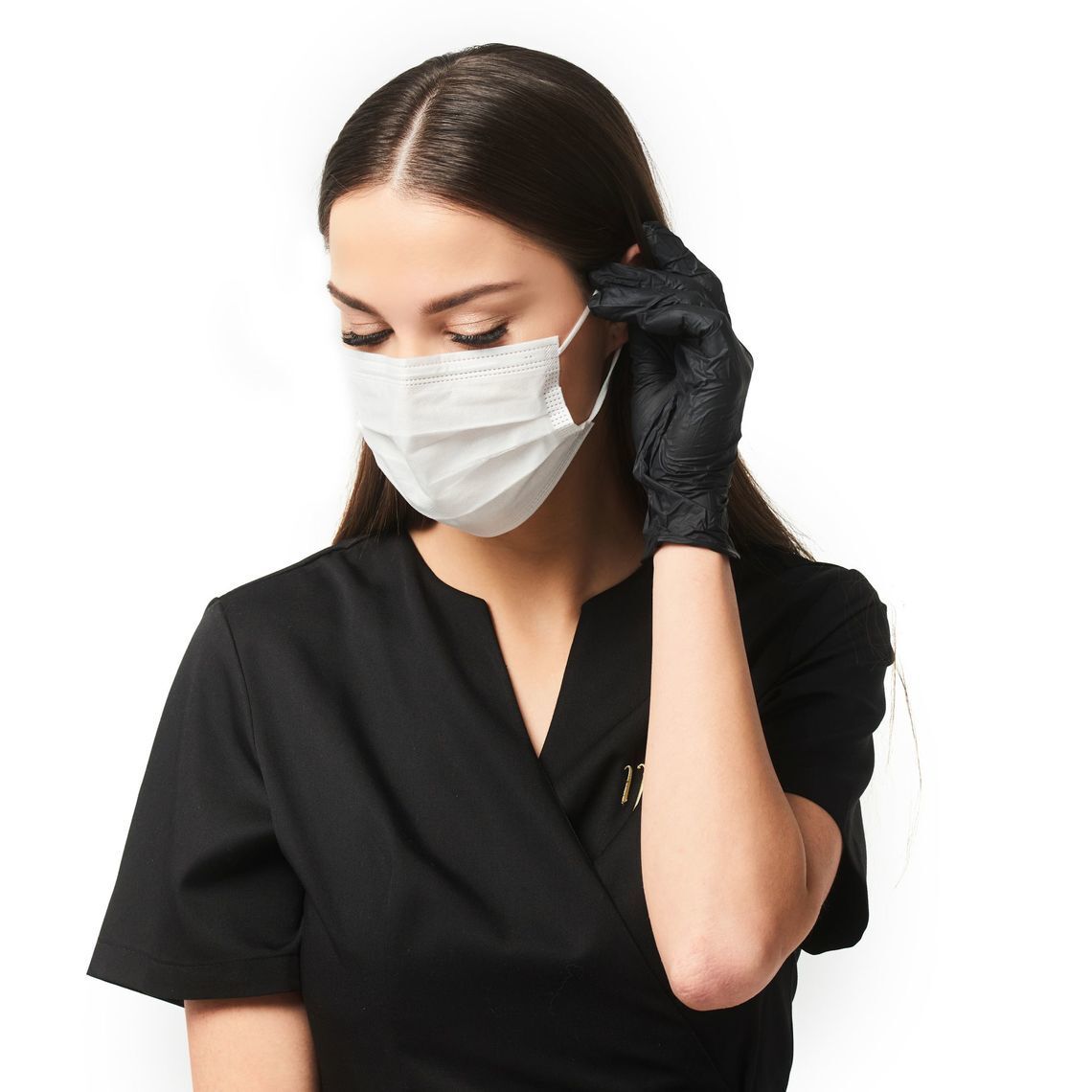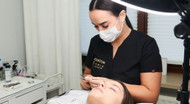Working as a Lash & Brow Stylist – With or Without a Mask? Pros, Cons & Practical Tips
28th Mar 2025
As a lash or brow stylist, have you ever wondered whether you should wear a mask at work? It’s a question many beauty professionals ask themselves, especially nowadays, when hygiene standards in salons are more important than ever. A mask can serve not only as an extra layer of protection but also as part of your professional image. But what does it look like in practice? Below, you'll find the pros and cons of working with and without a mask — plus practical tips on what to look out for when choosing a mask.
Why consider wearing a mask during lash and brow treatments?
One of the biggest challenges in our profession is how close we get to the client’s face. When styling lashes or brows, you often spend long hours just a few centimeters away. Even with strict hygiene practices, this closeness increases the risk of spreading germs. A mask acts as an extra barrier, protecting both you and your client.
Benefits of working in a mask:
✅ Better hygiene and health protection – a mask reduces the risk of spreading germs and limits exposure to dust, particles, or adhesive fumes.
✅ Professional image – when clients see you wearing a mask, it shows them you care about their safety and comfort.
✅ Peace of mind for clients – many people feel more comfortable knowing their stylist is wearing a mask, especially during flu season or periods of increased illnesses.
Challenges of working in a mask:
❗ Discomfort during long hours – even lightweight masks can sometimes feel stuffy and make breathing harder.
❗ Skin irritation – for sensitive skin, masks can cause redness or minor abrasions. It’s worth taking short breaks between clients and using soothing skincare products.

Or maybe… work without a mask?
Many stylists choose to work without a mask, enjoying the freedom and comfort it gives. You can breathe naturally, communicate with ease, and your client can see your facial expressions, which often helps to build trust.
Advantages of working without a mask:
✅ More comfort and freedom – your skin isn’t irritated, and you can breathe freely.
✅ Easier communication – no barriers when talking to your client, making the atmosphere friendlier and more relaxed.
Disadvantages of working without a mask:
❗ Higher health risks – without a mask, you’re more exposed to germs, dust, or adhesive fumes.
❗ Client concerns – some clients may perceive the lack of a mask as a sign of lower hygiene standards, which might affect whether they return to your salon.
What kind of masks should you avoid?
Not every mask is suitable for lash and brow stylists. Here’s what to watch out for:
Cotton or loose fabric masks – although they may look nice, they quickly absorb moisture and don't filter particles effectively.
Single-layer masks – too thin to offer proper protection in a salon environment.
Poorly fitting masks – if the mask doesn’t sit snugly on your face, germs and particles can easily get through.
Masks without chemical filters – if you're working with lash adhesives or laminating products, avoid masks that don’t filter fumes.
How to find the right balance?
Whether you choose to work with or without a mask depends entirely on your needs, preferences, and your clients’ expectations. If you opt for a mask, go for lightweight, three-layer models maolyde from ppropylene non-woven fabric (PP). Ideally, it should be hypoallergenic and flexible enough to fit your face comfortably without irritating the skin.
Remember — a mask isn’t just protection. It’s also a clear signal to your clients that you care about their well-being.
Additionally, to ensure maximum comfort and hygiene during lash and brow treatments, consider offering your client a protective cap or a Noble Lashes terry cloth headband. The cap keeps hair away from the face, which is especially helpful when applying lashes. The terry headband not only holds hair in place but also adds an extra layer of protection between your hands and the client’s skin, making the treatment more pleasant and hygienic for both sides.

